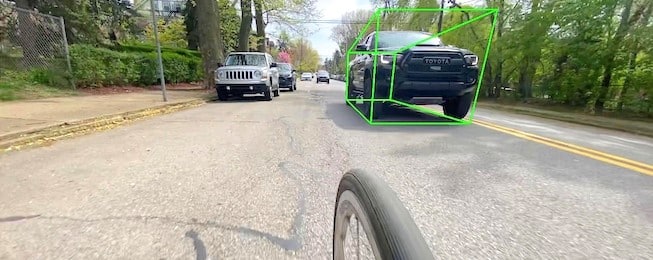Because we can’t see what's behind us riders tend to fear approaching traffic, even though that anxiety might not always be justified.
We already have radar-equipped bike lights that can detect traffic behind and alert a rider, and many riders have found that reassuring.
But now artificial intelligence has emerged as a potential eye-opener for rear-vision.
A small start-up in the USA has produced an experimental bike light that has a camera and tiny computer that uses AI to analyse the video feed and predict the behaviour of cars approaching from behind.
Now in limited production it can:
- identify cars, bikes, and pedestrians
- alert riders audibly about cars "following," "approaching," and "overtaking"
- issue visual warning to drivers who are approaching too close or too fast
- send visual notifications and a simplified rear road-view to an optional paired smartphone
- record 1080p video and tag "close calls" and "incidents" from your phone.
This is a vast jump up from current radar devices such as the Garmin Varia.
But there are drawbacks: the lights–camera–computer unit is heavy at 330 grams, a comparatively bulky 92 x 95 x 35mm, and battery life is five hours. Because of the heft it will hang from your saddle rail.

Nevertheless, the first production run sold out in 24 hours at US$400 each.
Called Copilot, the system was developed by two young PhD engineers with backgrounds in robotics and machine learning.
The first step of developing Copilot’s AI algorithms was to collect a large amount of data from riding around a variety of road types, with a focus on interactions with vehicles.
This process was aided by a beta-testing cohort of Pittsburgh cyclists – ranging from commuters to recreational riders – who were given a free prototype unit to test.
A major challenge lay in cramming the camera, LEDs, electronics, and battery pack into a compact and lightweight package.
The device also needed to be powerful enough to run AI neural networks, yet with a relatively low power drain to enable it to be used for longer bike rides.
The company says the Copilot appeals to different types of cyclists, including parents and spouses who care about the cyclist in their life and want something that’s going to keep them safer on the road.
“We’ve had a lot of folks say, ‘I would buy this for my son or daughter, I would buy this for my husband’.”


